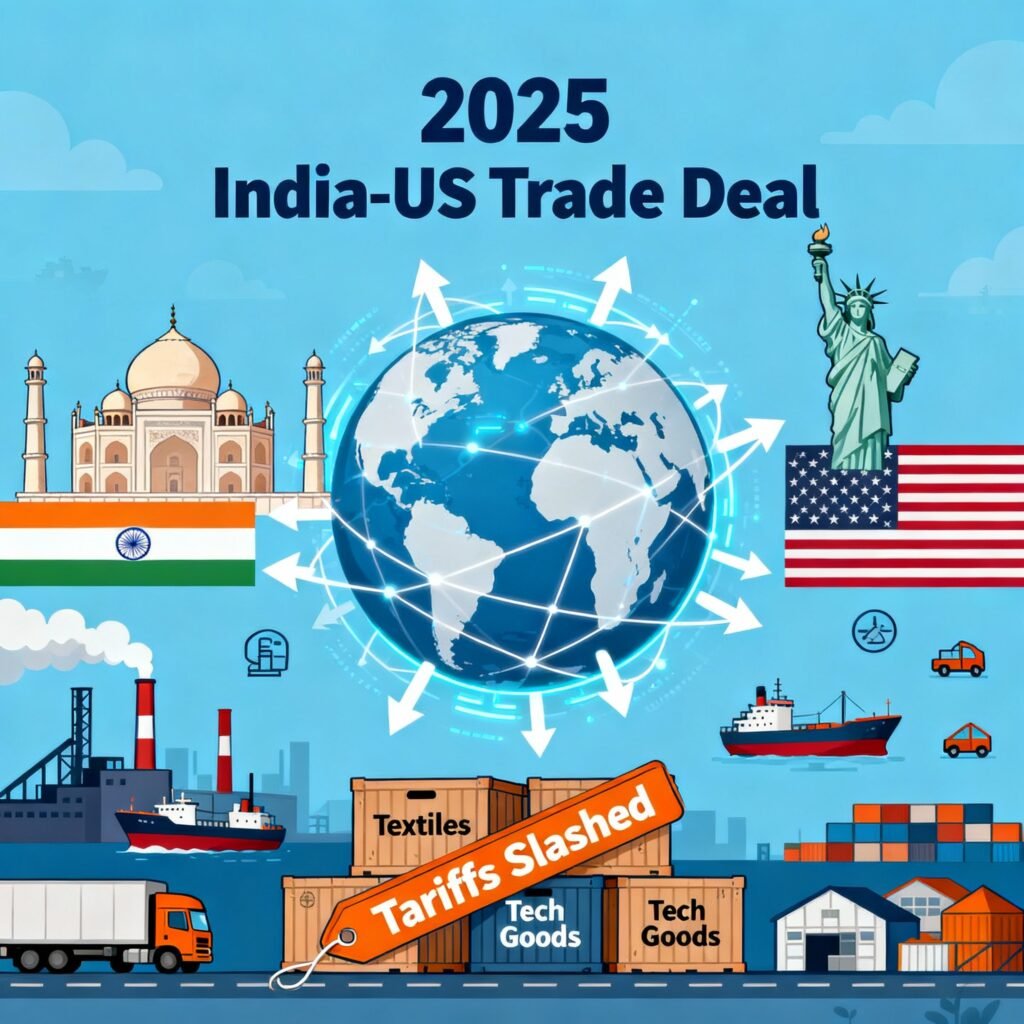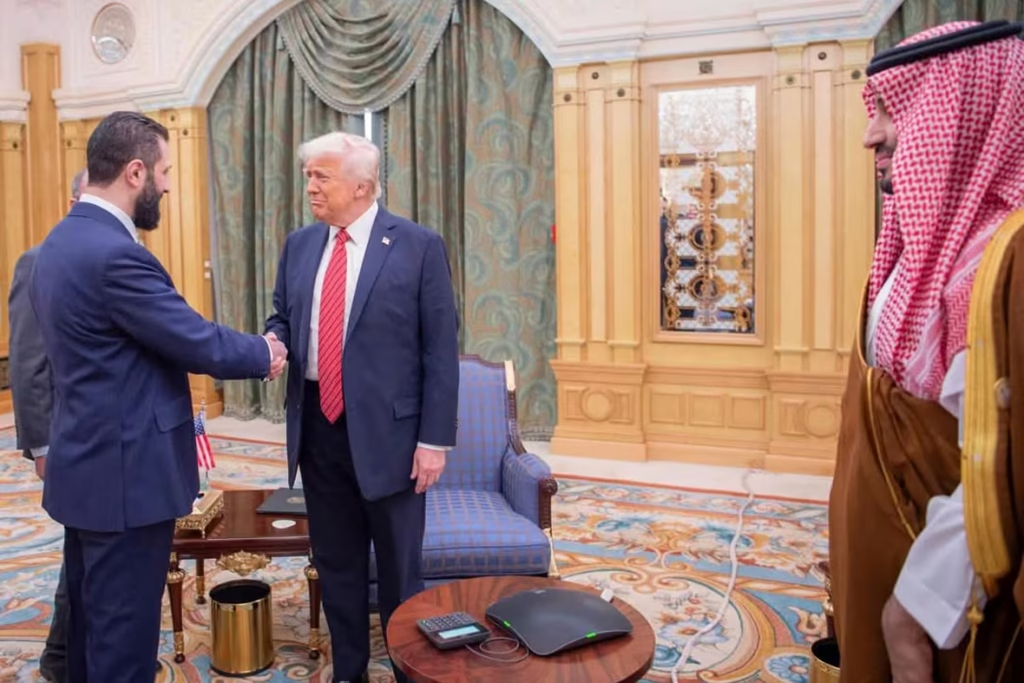India and the United States are closing in on a 2025 trade deal that would slash U.S. tariffs on Indian exports from roughly 50% to about 15–16%, a step that could reset price parity, reorder sectoral competitiveness, and ripple through energy and agriculture supply chains on both sides.1 The prospective agreement is tied to parallel moves on energy security and farm-market access, with discussions shaped by a Trump–Modi call this week that emphasized trade and energy linkages ahead of an expected announcement at the ASEAN Summit.2
What Changed
Reports indicate the deal’s core is a dramatic reduction of elevated U.S. tariffs imposed on Indian exports in 2025, bringing duties down to 15–16% from levels that had effectively reached 50% for many categories, restoring a more commercially viable landing price in the U.S. market.3 This comes after months of friction, including punitive tariff moves earlier in the year and subsequent signals from both capitals that de-escalation and normalization were back on the table.
Indian Exports: Likely Tailwinds
Lower headline tariffs translate directly into improved margin arithmetic and shelf competitiveness for Indian shipments into the U.S., with the broad cut from $50\%$ to around $15–16\%$ poised to reinvigorate categories that had stalled under penal rates. The deal framework also points to a periodic review mechanism, which—if adopted—could provide policy predictability that helps exporters price contracts and plan inventory cycles more confidently.4 Strategically, an across-the-board duty reset is more impactful than piecemeal relief because it reduces administrative friction and enables scale planning for large order books.
American Goods in India: Clearer Pathways
On the import side, India is weighing expanded market access for select U.S. agricultural goods, with non-genetically modified corn and soymeal cited as candidates for incremental entry, while sensitive categories like dairy remain unresolved for now.5 Energy is the other key pillar: the U.S. is positioning for deeper energy trade as New Delhi signals a gradual pullback in purchases of Russian crude, a shift that would open space for more U.S. barrels and LNG in India’s sourcing mix.6 Together, these moves suggest a barter of tariff relief for calibrated access in agriculture and a strategic rebalancing in energy that aligns with Washington’s supply and security priorities.
The Politics and Timing
President Donald Trump said he discussed trade and energy with Prime Minister Narendra Modi this week, while parallel briefings in New Delhi flagged that contours are largely settled pending political clearance, with a possible unveiling at the ASEAN Summit later this month.7 Indian and U.S. readouts, along with prior USTR guidance on the bilateral roadmap, frame this deal as part of a broader agenda to reduce tariff and non-tariff barriers and deepen market access in a structured, reviewable way.8 That architecture matters because durable trade gains usually rely on enforceable terms and predictable review cycles rather than one-off concessions.
Global Supply Chains: What Shifts Next
- If New Delhi trims Russian crude purchases in favour of diversified suppliers, including the U.S., the redirection of flows could modestly reshape crude trade lanes and hedging behaviour for refiners.
- On the goods side, tariff normalization reduces incentives to route Indian-origin shipments through third countries to mitigate duties, shortening lead times and lowering compliance risk in U.S. distribution networks.
- A cleaner bilateral regime could also complement near-shoring and friend-shoring plays by giving multinationals clearer price signals for placing incremental capacity in India for the U.S. market.
What to Watch Before Signing
- Final tariff schedules and staging: whether cuts to $15–16\%$ are immediate or phased will determine how quickly exporters can reprice and ramp.
- Sector carve-outs: specifics on exempted lines and any safeguard triggers will shape which product clusters benefit first and most.
- Review and enforcement: clarity on the periodic review mechanism and dispute resolution will decide whether relief is durable and bankable for long-term contracts.
Playbook for Indian Exporters
- Update landed-cost models for the U.S. under a $15–16\%$ duty scenario and re-quote framework contracts with indexed pass-through to capture early demand elasticity once terms are formalized.
- Reassess U.S. channel mix—direct retail versus wholesale—since lower duties can justify deeper SKU assortments and faster replenishment in high-velocity categories.
- Engage certification and compliance teams early to align product documentation with any new rules of origin or review protocols embedded in the agreement text.
Outlook
The India–U.S. trade deal of 2025, if announced on the reported timeline, would mark the sharpest bilateral tariff reset in years, swapping a punitive 9$50\%$ regime for a normalized 10$15–16\%$ band while knitting agriculture and energy into a broader strategic compact.11 For firms on both sides, the opportunity is immediate but will reward those who move quickly on pricing, contracts, and compliance to lock in first-mover gains as policy hardens into practice. In a fragile global trade cycle, predictability is alpha—and this deal’s promise is exactly that: clearer rules, lower frictions, and supply lines that can flow with fewer detours.


